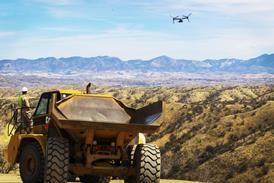EMMA KELLY / PERTH
But Australian Transport Safety Bureau retests aircraft crankshaft and stands by earlier conclusion on twin-engine failure
The South Australian coroner has rejected a number of conclusions drawn by the Australian Transport Safety Bureau (ATSB) in its inquiry into the May 2000 crash of a Whyalla Airlines Piper Navajo Chieftain. The coroner last week concluded that the double engine failure was due to a fatigue crack in the left crankshaft due to a manufacturing flaw and end gas detonation damage to the right engine. The ATSB stands by its findings.
While operating a regular passenger service from Adelaide to Whyalla in South Australia, the aircraft ditched into the Spencer Gulf, near Whyalla, following double engine failure, killing the pilot and seven passengers on board. After the crash one of the aircraft's Textron Lycoming T10-540-52B engines was found to be part of a batch affected by a materials problem in the manufacturing process.
In its final report issued in December 2001, the ATSB attributed the fractured crankshaft in the left engine to fatigue, initiated by thermal cracking, and failure of the right engine to a holed number six piston due to melting of the piston material. The ATSB said the latter was due to the pilot increasing the engine power settings on the right engine, following failure of the left engine, to an inappropriate extent.
The coroner, however, says that the number six piston in the right engine was damaged during take-off and climb. During the flight when the right engine began showing signs of end gas detonation damage, the pilot reduced power on that engine, causing a yaw to the right. He increased the RPM on the left engine, but the crankshaft in the left engine failed due to fracture of the left crankshaft caused by a fatigue crack.
The coroner says the fatigue crack was a result of a subsurface defect in the steel attributed to a flaw in the manufacturing process. The failure of the right engine was attributed to end gas detonation damage to the number six piston, possibly due to detonation during the climb phase when the mixture settings were "unduly lean and were likely to create unduly high peak cylinder pressures", says the coroner.
Experts consulted during the coroner's inquiry disputed the ATSB's claim that the bearing failure or thermal cracking was the cause of the failure of the left crankshaft and that oxybromides were a significant factor in the failure of the left engine.
The ATSB disagrees with some key findings and accuses the inquest of being "unduly adversarial". The ATSB reopened its investigation in November last year and has re-tested the crankshaft, including destructive testing during which it found no problems with the steel that could have led to a fracture under normal operating conditions. The ATSB also maintains the left engine failed first and the right engine overheated when power was increased in response.
Source: Flight International























